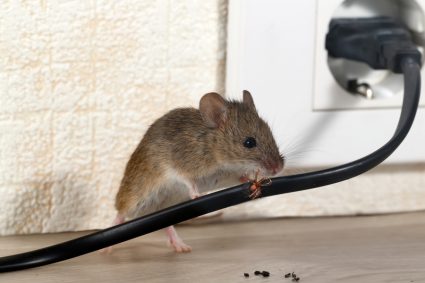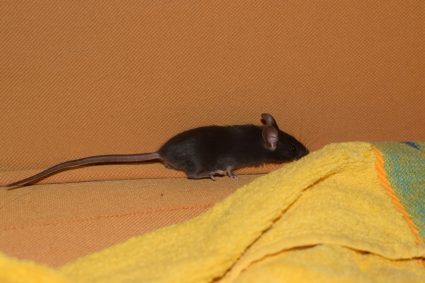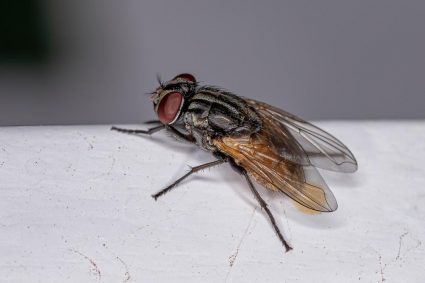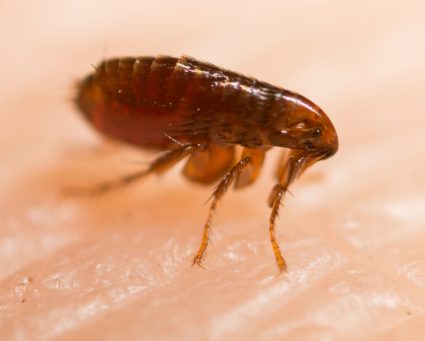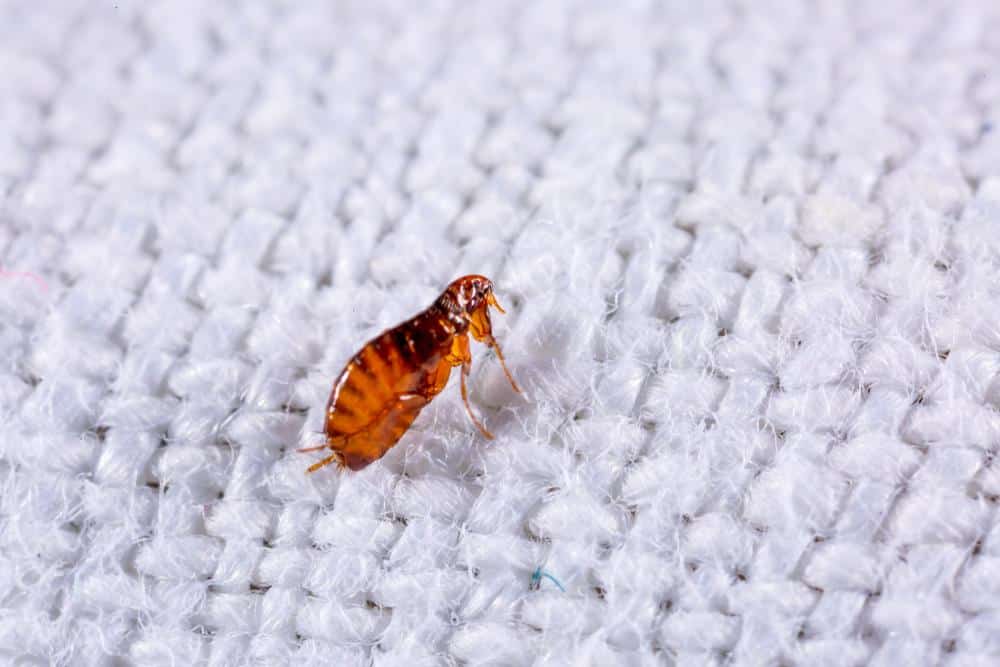
Fleas are tiny, parasitic insects that can cause significant discomfort to both pets and humans. They are notoriously difficult to eliminate due to their rapid breeding cycle and ability to survive in various environments. If you’re battling a flea infestation, you may be wondering, “How do exterminators get rid of fleas?” This comprehensive guide will answer that question, providing in-depth insights into the extermination process, from initial inspection to post-treatment measures.
Exterminators get rid of fleas by conducting a thorough inspection to assess the infestation and identify the flea species. They then apply insecticides that kill adult fleas and halt the development of flea eggs and larvae. Concurrently, pets are treated with appropriate flea treatments. After the initial treatment, exterminators schedule follow-up visits to ensure the infestation is fully eradicated, and homeowners are advised to vacuum daily for 2-3 weeks to control any potential resurgence of fleas.
Recognizing a Flea Infestation
Before we delve into the extermination process, it’s crucial to understand how to recognize a flea infestation. Here are the key signs:
- Excessive Scratching: Pets infested with fleas will often scratch, bite, or lick their fur excessively due to the irritation caused by flea bites.
- Visible Fleas or Flea Droppings: Fleas are small, reddish-brown insects that can be seen moving through your pet’s fur. Flea droppings, also known as flea dirt, appear as small red or black specks.
- Flea Eggs in Carpet: Flea eggs are tiny and white. They can often be found in carpets, pet bedding, and other areas where your pet spends time.
- Bites on Humans: Fleas also bite humans, often around the ankles or lower legs. Flea bites are small, red, and itchy, and they may appear in clusters or lines.
The Extermination Process
Professional exterminators typically use a multi-step approach to tackle flea infestations effectively. Here’s what the process looks like:
Inspection
The first step in the extermination process is a thorough inspection. The exterminator will assess the extent of the infestation, identify the flea species, and locate areas where immature stages of the flea population are residing.
Treatment
After the inspection, the exterminator will apply insecticides to infested areas. These chemicals often contain adulticides to kill adult fleas and insect growth regulators to stop the development of flea eggs and larvae.
Pet Treatment
Pets are often the primary hosts for fleas, so it’s crucial to treat them simultaneously with the home treatment. Veterinarians can recommend appropriate flea treatments for pets, such as oral medications, topical treatments, or flea collars.
Follow-Up
Following the initial treatment, exterminators typically schedule follow-up visits to ensure the infestation is fully eradicated. Homeowners are advised to vacuum daily for 2-3 weeks to help control any possible resurgence of the flea population.
Factors Influencing the Extermination Process
Several factors can influence the extermination process, including:
- Type of Infestation: Different types of fleas require different treatment methods. The exterminator will identify the flea species during the inspection to determine the most effective treatment approach.
- Severity of Infestation: Larger and more severe infestations may require more time and multiple treatments to eliminate effectively.
- Size of Infested Area: The size of the infested area and the complexity of the building can influence the time and resources required for extermination.
Preventing Future Infestations
Preventing future infestations is crucial once the existing flea population has been eliminated. Here are some measures exterminators recommend:
- Regular Cleaning: Regular vacuuming and washing of pet bedding can help eliminate flea eggs and larvae.
- Pet Care: Regular grooming and bathing of pets, along with the use of veterinarian-approved flea control products, can help prevent re-infestation.
- Yard Maintenance: Maintaining your yard, including mowing the lawn and trimming shrubs, can help reduce potential flea habitats.
In conclusion, dealing with a flea infestation can be challenging, but professional exterminators use proven strategies to eliminate these pests effectively. Recognizing the signs of an infestation, understanding the extermination process, and implementing preventive measures can help ensure your home remains flea-free.
Frequently Asked Questions
How long does it usually take for an exterminator to eliminate a flea infestation?
The duration of the extermination process can vary depending on factors such as the severity of the infestation and the size of the infested area. However, typically, it can take anywhere from a few hours to a few days for the initial treatment. Follow-up treatments may be required over the course of a few weeks to ensure complete eradication.
Are the chemicals used by exterminators safe for my pets and family?
Professional exterminators are trained to use insecticides in a manner that minimizes risks to humans and pets. However, it’s generally recommended to keep pets and children away from treated areas until the insecticide has dried. If you have specific concerns or sensitivities, you should discuss these with the exterminator before treatment begins.
Can I treat a flea infestation on my own without professional help?
While there are numerous DIY flea treatments available, they may not be as effective as professional services, especially for severe infestations. Exterminators have access to more potent products and have the expertise to use them effectively. They can also identify and treat all stages of the flea lifecycle, not just the adult fleas you can see.
Why do fleas keep coming back even after treatment?
Fleas have a rapid breeding cycle, and their eggs and larvae can be hidden in carpets, furniture, and other areas of your home. This makes them difficult to eliminate completely, and they may reappear after treatment if any eggs or larvae were missed. Regular follow-up treatments and preventive measures, such as regular cleaning and pet care, can help prevent re-infestation.
How can I prevent fleas from infesting my home in the first place?
Preventive measures include regular cleaning and vacuuming of your home, regular grooming and flea treatments for your pets, and keeping your yard well-maintained to reduce potential flea habitats. It’s also important to act quickly at the first sign of fleas to prevent a full-blown infestation.

